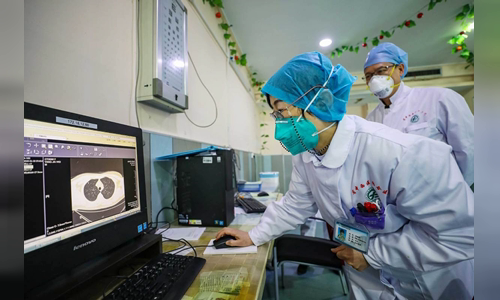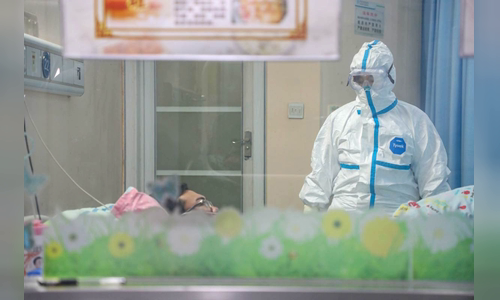On December 26, respiratory expert Zhang Jixian, 54, diagnosed four people, three of whom were from the same family, suffering from a new flu.
Through the results of x-rays, their lungs are similar to the symptoms of pneumonia patients. The next day, another 3 patients came to her with the same symptoms. Ms. Zhang became alert. What worries her is that her family members get sick, which means it is an infectious disease.

Ms. Zhang Jixian read a CT scan of a patient at Hubei Provincial Hospital on January 30 Photo: China Daily
"In general, only one patient in a family and the other three who do not have the disease at the same time are not contagious," she said.
Four of the first seven patients of this new type of pneumonia have one more thing in common: they have been to the South China market, which sells wildlife, in Wuhan.
Ms. Zhang became the first doctor in the world to diagnose and then monitor the new strain of corona virus (nCoV), the virus that killed more than 400 people in the next 5 weeks and infected more than 20,000 people globally. She is now considered a hero in China.
Yesterday, the Yangtze River Daily newspaper, became one of the first media channels to interview this female doctor. The interview attracted 420 million readings and 93,000 discussion ideas on Weibo.
Ms. Zhang, who is described as being gentle and gentle, is the director of the Respiratory and Critical Care Department, Hubei Province Hospital.
"This is a disease we have never seen before. There are up to four patients from the Hoa Nam seafood market. Surely this is a problem," Zhang said.
She said all seven patients had lung symptoms, only different in severity. She realized the situation was very unusual and immediately reported it to the hospital, asking for a general consultation. These 7 cases of pneumonia were confirmed as the first cases of ncoV infection.

Ms. Zhang Jixian examined a patient with nCoV pneumonia at Hubei Provincial Hospital on January 30 Photo: China Daily
Just a few days later, Ms. Zhang was overwhelmed. "By the beginning of the new year, 9 isolation beds in the hospital are no longer enough," she said.
Shortly thereafter a team of experts from various hospitals in Wuhan collaborated to monitor the disease. Since the discovery of the first cases, Ms. Zhang directed all personnel in the respiratory department to wear masks and the hospital approved the N95 special facemask for the department.
"We only wear the N95 when entering this area. Other areas still use regular medical masks," she said.
As of December 31, doctors use protective clothing and equipment when treating new pneumonia patients. Ms. Zhang said her experience against infectious diseases stemmed from the SARS epidemic. When fighting the plague in 2003, she was 37 years old, a member of an expert group in a county. Her daily task is to visit different hospitals to investigate suspected people.
Doctors in Wuhan, where the onset of acute pneumonia, have been strenuously working in an overwhelming situation, lacking medical equipment, or even being threatened by impatient patients. Even when Hubei Province's 500,000 health workers worked during the New Year, facilities were overloaded.
The city of Beijing has said it has mobilized more than 6,000 health workers to support colleagues. The army, navy and air force, is also on duty at three major hospitals for pneumonia treatment in the city.
The first field fire hospital, Hoa Than Son, with an area of 2,500 m2 with a capacity of 1,000 beds, was completed with modern equipment and facilities, ready to welcome 1,400 soldiers and military personnel to work and treat Patients with nCoV infection from today.



 AngelaAkenson
AngelaAkenson







